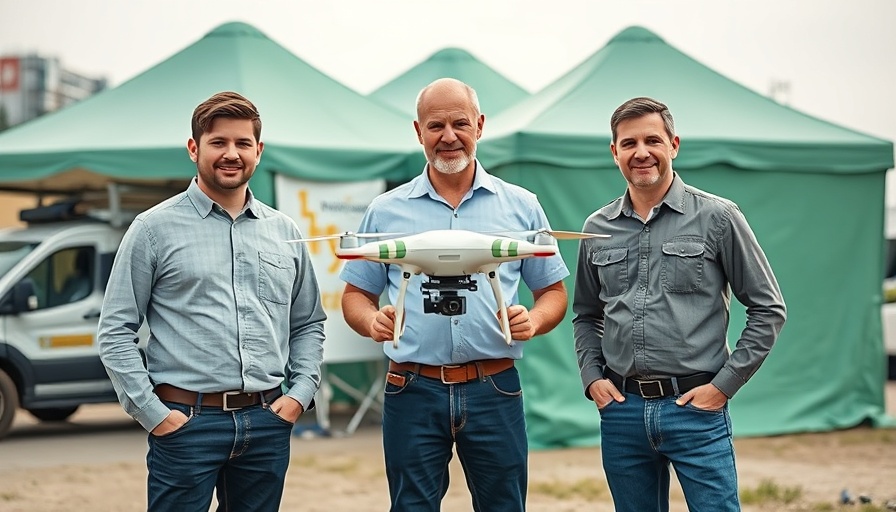
Revolutionizing Drone Operations: The Impact of Sorair's BVLOS Approval
Sorair's recent attainment of the UK's first BVLOS (VM) approval is a considerable leap forward in the realm of drone technology and operations. By allowing users of the Soranet™ system to conduct remote operations beyond visual line of sight across the United Kingdom, this new certification paves the way for significant advancements in surveillance capabilities.
With the advent of BVLOS operations, drone pilots can now expand their operational ranges, enhancing their services in critical areas such as security and inspection. Sorair's technology aligns perfectly with recent regulatory updates from the UK Civil Aviation Authority (CAA), particularly the Specific Operational Risk Assessment (SORA) framework, which sets guidelines for executing more complex drone operations while ensuring safety and compliance.
Understanding BVLOS: A Game-Changer for Drone Users
BVLOS operations allow for drone flights that extend beyond the remote pilot’s physical sight, transforming how organizations utilize drone technology. Users can now initiate operations without waiting for separate approval, allowing for immediate implementation. For industries heavily relying on surveillance, the ability to cover vast areas efficiently will enhance operations, ensuring better safety and security protocols are implemented across the board.
Key Benefits of Sorair's BVLOS Approval
The strategic benefits that this approval brings to Soranet™ users cannot be overstated. Operators can conduct aerial surveillance efficiently, covering critical areas that were previously challenging to monitor:
- Enhanced Surveillance: With the ability to oversee larger geographical zones, security teams can provide a higher level of service, addressing blind spots that traditional methods would miss.
- Operational Efficiency: Drones can automate inspections and security patrols, saving time and resources, and allowing staff to focus on other critical tasks.
- Critical Incident Response: Drones can assist in responding to emergencies by quickly gathering aerial data and providing real-time situational awareness for better decision-making.
Developing a Framework for Safe Operations
The CAA’s newly introduced SORA framework significantly bolsters safety by requiring operators to identify risks associated with their drone operations and develop mitigation strategies. This approach not only enhances safety for people on the ground and in the air but also fosters a culture of responsibility and compliance within the drone industry.
As Adebayo Popoola, CTO of Sorair Technologies, pointed out, securing nationwide approval is not just an achievement—it reflects the synergy between technological innovation and regulatory compliance, essential for driving future advancements in drone technology.
Looking Ahead: The Future of Drone Surveillance
As Sorair leads the charge in BVLOS operations, the company encourages other industry players to adopt similar regulatory compliance measures for a sustainable drone service ecosystem. The evolution of drone technology, backed by robust regulatory frameworks, offers exciting opportunities for growth across various sectors.
In conclusion, Sorair's significant milestone opens a conversation about the integration of drone technology in our daily operations and public safety measures. As drone enthusiasts, industry professionals, and tech advocates, this is a pivotal moment to remain informed and engaged with these advancements.
Join the Drone Revolution Now!
If you're intrigued by the rapidly evolving landscape of drone operations and technology, consider exploring further insights and developments in this field. Staying informed can inspire innovative ideas to incorporate drone technology into everyday applications.
 Add Row
Add Row  Add
Add 




Write A Comment